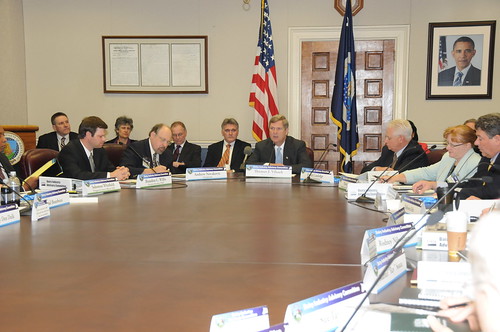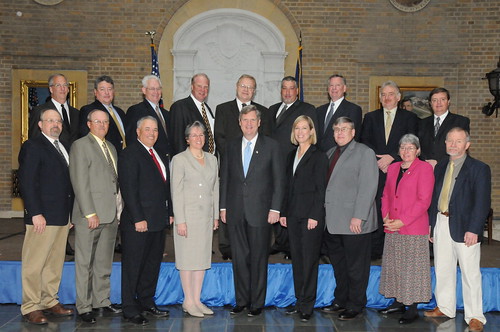A group of 17 men and women that represent the dairy industry met at USDA headquarters on Tuesday for the first time to find a solution to the volatile pricing of milk and milk products that has decreased industry profits and caused many operations to close.
“We need a relatively quick response from this group,” said Agriculture Secretary Tom Vilsack in his opening remarks to the newly-formed Dairy Industry Advisory Committee. “I hope at the end of all of this you can come up with a common solution that you can recommend to us and that we can present to the rest of the industry.”
The committee, which was established by USDA in August 2009, was designed to advise the secretary on policy issues impacting the dairy industry. The three-day public meeting will allow members to review farm milk price volatility and dairy farmer profitability, and make recommendations on how USDA can best address the long- and short-term needs of the dairy industry.
“The bandwidth between the good times and bad times used to be relatively stable,” said Vilsack. “Over the past couple of years it has become very dramatic. The dips are significant, increases are not as high and there is not enough time for an operator to recover."
Dairy farmers like Mary Cameron have been hit hard and continues to struggle to keep her operation running.
“My gross income has dropped to $160,000 a month and I’m about $600,000 in debt,” said Cameron, who owns nearly 1,000 cows on her farm in California. “It’s difficult to operate a farm when you have lost 42 percent of your income.”
The price of milk is based on commodity markets, which fluctuates with global demand. During the first quarter of 2009, milk prices dropped from $16.80 per cwt to $12.23 per cwt due to oversupply. Consumers weren’t buying as frequently and restaurants and other businesses cut down on how much milk and milk-based products they bought, creating a surplus of milk, which drove prices down.
According to the USDA, during that time, producers were paid half of what it cost them to produce the milk.
In response to those fluctuating prices, the government took action. “We went through a series of steps last year in an effort to try and help the industry,” said Vilsack. “It ranged from counter cyclical payments to commodity purchases, to an increase in additional resources provided by Congress. The hope was that as a result of that assistance the industry would produce inventory and eventually right itself.”
The assistance created a slight rebound late last year, but it did not last as current numbers show a steady decline in prices.
“The government can’t keep going with the Band-Aid approach,” said Vilsack. “We have to solve this and I am confident that [this group] will come up with a solution that we can implement through the legislative or regulatory process.”

Agriculture Secretary Tom Vilsack stressed the importance of the committee’s work, adding that saving the dairy industry is part of the survival and revival of rural America.

Dairy Industry Advisory Committee members took time to introduce themselves and offer opening statements.
 The 17 members of the Dairy Industry Advisory Committee were selected from more than 300 nominations representing producer and producer organizations, processors and processor organizations, handlers, retailers, consumers, academia and state agencies.
The 17 members of the Dairy Industry Advisory Committee were selected from more than 300 nominations representing producer and producer organizations, processors and processor organizations, handlers, retailers, consumers, academia and state agencies.
